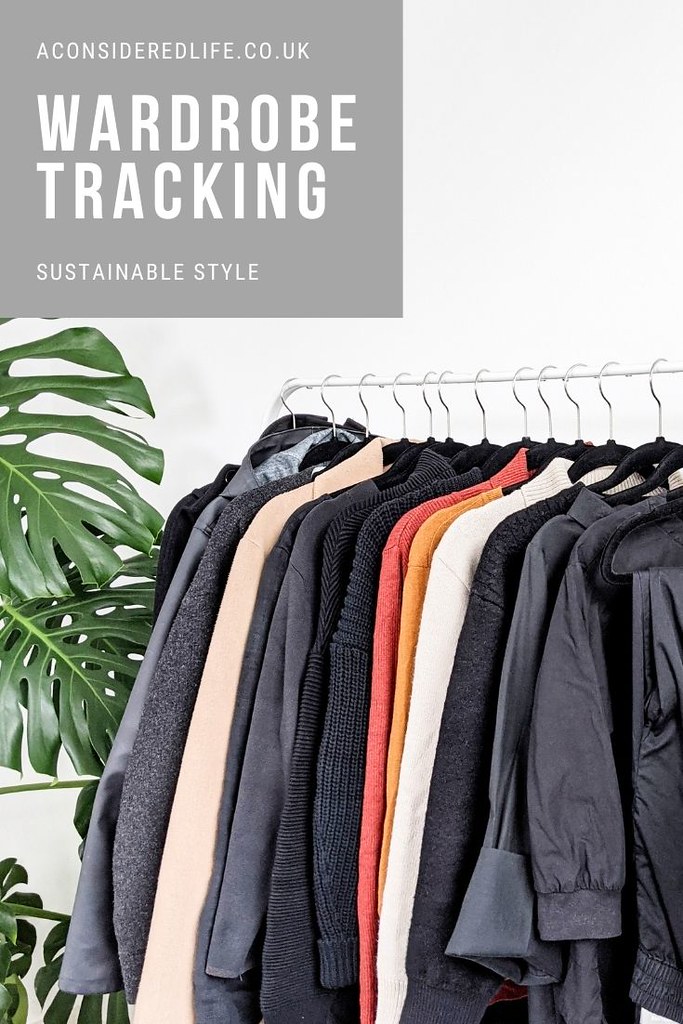
Whenever I talk about aiming to get 30 wears from each item I own, people often scoff and say that's super easy. They hardly own anything and wear everything all the time! The reality is many of us have bigger wardrobes than we realise, and we don't wear things anywhere near as often as we think we do.
If you're trying to be a more conscious shopper, make fewer purchases, get more wears out of your wardrobe, or develop your personal style - wardrobe tracking is a super useful tool. Most of us vastly underestimate the amount of stuff we own and how often we wear it, tracking your wardrobe really puts that into perspective.
Wardrobe tracking shows you what you wear and how often. It highlights the outfits you enjoy wearing, as well as the colour palettes you prefer. Tracking wears can help with planning outfits and restyling new ones, as well as making purchases and packing lists. Most importantly it helps you to appreciate what you already own, and become a smarter shopper.
Creating A Wardrobe Inventory
I've found creating a wardrobe inventory is one of the most useful tools for developing personal style. It's a list of every item of clothing you own saved as images to a spreadsheet, Pinterest boards, or apps. Acloset, Whering, and Style Book are the most popular choices. Having a digitized version of your wardrobe enables you to view all your clothes at a glance, style new items and outfits, and put together capsule wardrobes.
View my wardrobe inventory. To create my inventory, I saved images of every item I own, which I use to put together my seasonal capsule wardrobes. Instead of photographing every item, I pulled stock images from the brand's websites. Some things I couldn't find and substituted for similar looking items. If you do the same it'll be much quicker to set up your wardrobe inventory.
Related Posts:

How To Track Wardrobe Wears
There are different approaches you can take to wardrobe tracking, like writing everything out on paper, using an app for digital documentation, or the less reliable hanger method. A Reddit user shared a great (if slightly overwhelming!) Wardrobe Inventory and Outfit Log if you want to get really in-depth with your wardrobe tracking. I'll share my much simpler method below.
I recommend you start by focusing on creating a capsule wardrobe for the current season with around 30 items you think you'll wear over the next four months. Then tracking the wears of each item every day for a set period of time. Have a goal in mind, like wearing every item at least 5 times or decluttering any item isn't worn at all, so that once you've finished tracking wears you can implement some changes that will help you.
Since I create seasonal capsules, I added these items to a spreadsheet and tracked the number of times I wore each item. Just the name of the item, an image, and how many times I've worn it. It takes less than a couple of minutes to update each day, which makes it quick and easy to maintain. Once I finished wardrobe tracking, I looked at what items I hadn't worn and decide whether to declutter or try to restyle them.
Wardrobe tracking can be as complex or straightforward as you want to make it but I suggest picking a method you know you can stick to and will be consistent with. Wardrobe tracking is only useful if you do it daily so don't over complicate the process.
I skipped outfit logging to begin with and focused on tracking the wears of individual items to hit a 30-wears goal (over two seasons). My process takes less than a minute to update the spreadsheet and gives me a nice overview of how much I enjoy wearing each item in my current capsule wardrobe. I'd like to track outfits in the future and to do that I'll be using an app to make it easy.

What To Do After Tracking Wears
Creating a wardrobe inventory and tracking wears is a really helpful tool for those of us interested in creating a minimal, sustainable wardrobe that not only reflects our personal style but that actually works for our life by increasing the wear count of our clothes, and finding new ways to style them.
What you do after tracking your wardrobe depends on the goals you've set yourself. Perhaps you'll focus on changing your shopping habits or restyle the lesser worn clothing in your wardrobe. It's also an opportunity to declutter items you know for certain you're not wearing enough.

